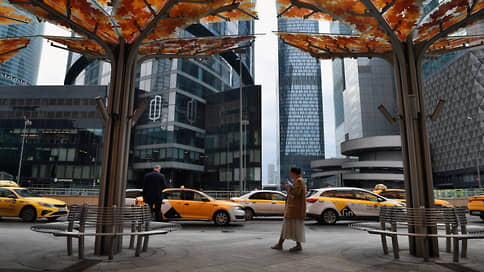drivers hide the status of a taxi driver due to an increase in the price of the OSAGO policy
[ad_1]

The volume of premiums collected by insurers in the OSAGO segment for taxi drivers turned out to be the largest in the last five years. This happened against the backdrop of a reduction in the number of contracts. Experts attribute the situation to the expansion of the tariff corridor in insurance, that is, the rise in the price of policies, against the background of which some drivers hide their status for the sake of savings. In 2023, they expect continued growth in the volume of collected premiums, while a decrease in the number of taxi drivers may hold back the introduction of a profile register.
At the end of 2022, insurance companies collected 2.4 billion rubles from OSAGO in the segment of individuals, the average premium amounted to 20 thousand rubles, according to data from the Bank of Russia, published on June 5. For legal entities, the volume of collections reached 2.1 billion rubles. with an average premium of 41 thousand rubles. At the same time, the number of contracts concluded relative to 2021 in both segments decreased: for individuals by 5%, to 121 thousand, for legal entities – by 13%, to 54 thousand.
Experts believe that record collections in the OSAGO segment for individuals are mainly due to the price factor. The increase in the premium was due to the expansion of the tariff corridor, explains Alexei Bredikhin, director of the ACRA Financial Institutions Ratings Group. Since taxi insurance is unprofitable, all insurance companies keep rates for them at the highest possible level. In particular, according to the Central Bank, payments under OSAGO agreements concluded in 2018-2020 in relation to fees amounted to 122-125%. Therefore, as soon as there is a legitimate opportunity to raise the price, it immediately happens, adds Mr. Bredikhin.
Last autumn, the Central Bank already expanded the tariff corridor for OSAGO by more than a quarter. In addition, in January 2022, the Central Bank again expanded tariffs for cars of individuals and individual entrepreneurs by 10%, for trucks, passenger cars of legal entities and taxis – by 30% at once. The collection of premiums is also associated with automobile inflation (an increase in the cost of the cars themselves, spare parts against the background of their shortage due to the cessation of supplies from a number of “unfriendly” countries by 30-45%), says independent expert Andrei Barkhota.
Experts attribute the reduction in the number of concluded contracts to the concealment of the status of a taxi driver by drivers. The cost of a taxi policy is much higher than for other cars, which prompted some car owners not to indicate that the car is used as a taxi, Alexey Bredikhin explains.
The Russian Union of Motor Insurers (RSA) also notes that some cars are not insured like taxis. “In 2022, OSAGO agreements were concluded with 170,000 taxis. At the same time, according to the analytical center under the Russian government for 2021, there are about 400 thousand taxi cars in the country. This indicates that most taxi drivers hide the real purpose of using the car when concluding an OSAGO agreement, ”they believe.
According to Alexander Tsyganov, a professor at the Financial University under the Government of the Russian Federation, the overflow of clients into the segment of individuals from legal entities is not ruled out. Today, the aggregator is quite comfortable attracting individual taxi drivers, who often choose self-employment, rather than working with more expensive fleets, where taxes are higher and working conditions are much stricter, he explains.
The downward trend in the number of contracts for the five months of 2023 has not changed compared to last year. Thus, according to Igor Ivanov, deputy general director of RESO-Garantia, the share of the company’s customers using cars as taxis has decreased year on year.
Aleksey Bredikhin believes that in 2023 the trend will continue for both the number of contracts and premiums. According to Mr. Barhota, in the OSAGO segment for taxis, by the end of 2023, we can expect an increase in insurance premiums by 15-20% and the same increase in the average premium. The bulk of the policies will be covered by OSAGO contracts for new or one-year-old Chinese-made cars, he adds. At the same time, according to Mr. Tsyganov, the introduction of requirements for the inclusion of taxi drivers in the relevant register should cause an increase in insurance premiums against the background of the remaining factors of the frequency and size of insurance payments.
[ad_2]
Source link





